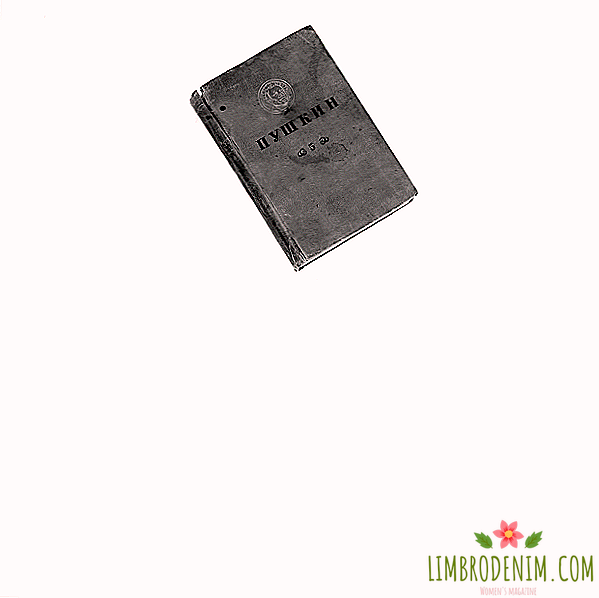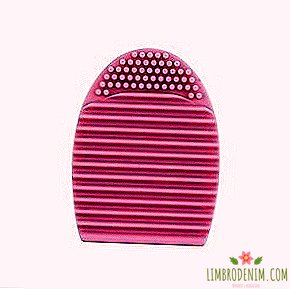"Expensive, unpatriotic, ugly": Why you should be proud of Russian fashion
The definition of "post-Soviet" in relation to fashion and culture in recent years has become a solid guarantee of popularity in the West. The global fashion community is closely following both Ukrainian designers and the Georgian market. Perhaps one of the most striking phenomena was the Russian designer Gosh Rubchinsky - he not only made collaborations with adidas and Burberry, but also forced representatives of the main foreign media to travel around Russia for his shows in Kaliningrad, St. Petersburg and Yekaterinburg.
Thanks to the Lumpen agency (its models are participating in Rubchinsky's shows), Russia remains an important exporter of non-standard beauty - along with conventional ideal models, more and more interesting faces of ordinary Russian boys and girls appear at foreign shows. At the same time, Russian fashion is tirelessly criticized at home. Not only sofa analysts, but also industry professionals - journalists, stylists and buyers - every now and then wearily notice: "We have everything as always." We understand whether this statement is true.

You are not there
The fashion world is experiencing a crisis of ideas, hysterical rearrangements of designers in fashion houses have become commonplace. With a difference of two weeks, Virgil Ablo, the creator of Off-White, was called to make the men's line in Louis Vuitton, and Yun An, co-founder of Ambush, was to head the jewelry department in Dior Homme. In this context, the popularity of Russian designers is quite natural, they turned out to be valuable precisely by ideas that are tied to rethinking the past.
The power of Russian fashion is in a game with cultural roots. Even polar brands such as Breaking Dawn and Ulyana Sergeenko show this common trait. The latter is inspired by the images of Soviet film stars and authentic technicians - for example, Vologda lace, the first - by youth and the 90s. Back in 2012, the ideas of Gosha Rubchinsky interested Adrian Joffe, husband and business partner of designer and founder of Comme des Garçons, Ray Kawakubo. Thanks to the designer’s collaboration with the holding, one of the most famous men's brands in the world appeared. Of course, by that time Gosh had already released several collections and even participated in London Fashion Week as part of a platform to support young designers Fashion East. But, most likely, the partnership was formed not because of the correct seams and craving for a complex design, but at the level of ideas. Those very ideas, techniques and codes of Rubchinsky, which in their homeland were subjected to severe obstruction. Why show the West images of the youth of the yard from the 90s, the critics were perplexed. While abroad, they bought up Rubchinsky's collections, here they talked about his contempt for his own culture.
The ideas of Rubchinsky in his homeland were subjected to severe obstruction. Why bring to the West the images of the youth of the yard from the 90s, the critics were perplexed
It would seem that Gazinskaya and Andrei Artyomov (Walk of Shame), popular in the West, should be perceived more favorably in Russia - these projects do not have complicated connotations. Designers rely on the quality of production and materials, come up with successful collaborations with more accessible brands (Vika Gazinskaya made a collection of c & Other Stories, and Walk of Shame - with Reebok), thanks to recognizable handwriting, they easily find buyers both at Matchesfashion and at points throughout The world pays attention to the ethics of production (Gazinskaya has long been following this mainstream trend of the fashion market), they are loved by stylists, bloggers and pop stars all over the world: Andrei Artyomov’s things are worn by everyone, starting with Royshin Murphy and ending with Leandra Medin. But this does not save from constant criticism at home. They are accused, for example, of the fact that "the price of things of a Russian and foreign designer, it turns out, can be the same."


Contrary to the market
At one time, both Gosha Rubchinsky and Vika Gazinskaya participated in Cycles and Seasons, the Mastercard sponsorship project to support ambitious Russian designers. This project was one of a kind and really useful - the rest of the fashion weeks were always exclusively commercial events. In Russia, it is impossible to get a grant for the development of the project, the state doesn’t show interest in designers either: last year, for example, the ex-winner of the Miss Universe contest and TV host Oksana Fedorova, who had no experience in this field, was appointed director of the fashion museum.
The founders of the brands J.Kim, February First, Nashe and Outlaw Moscow created their "sub-worlds" - powerful communities around their own brands.
So, young Russian designers are learning to loudly declare themselves independently. As did, for example, Nestor Rotsen, who recently showed a collection with mothers of Beslan, or Outlaw Moscow, who won a few years ago in a competition organized by SHOWstudio.
In fact, our designers work contrary to circumstances. The founders of the brands J.Kim, February First, Nashe and the same Outlaw Moscow created their own “sub-worlds” - powerful communities around their own brands. The development of these sub-worlds is very interesting to follow. For the creators of brands, not only clothes are important, but everything that surrounds their product: videos, lookbooks, shootings, people creating a whole picture. Designers' collaborators are familiar artists who paint prints for them - like the artist Lisa Smirnova and February First, or friends-photographers who tell stories through the lookbooks - Igor Klepnyov and Zhenya Kim do so.


And this design?
Even in our country it makes for brands that do not pretend to a complex design. One could rejoice at the new pool of young street brands who sell their stuff almost by themselves. This is an important phenomenon for a country where design education is either very expensive or very specific, and in fact there is no light industry at all. But the creators of brands like Goldmans or narvskayadostava are accused of wanting to make easy money - they often hear the question: "Is it possible to print a T-shirt design already considered a design?"
It’s even simpler to imagine what non-conventional models face in our country: all their outlets in the world fashion weeks are accompanied by boorish comments on the Russian-language Internet. Lumpen agency models, for example, are met with rudeness and even insults: “There are people who still call models“ freaks ”- if this happens on the Internet, we just block such people. It’s the last thing to criticize appearance. Avdotya Alexandrova. However, there are only more projects promoting unconventional Russian beauty. For example, Number Management represents the interests of Oli Zapivokhina, a model who underwent surgery on the brain and received an exclusive on the Gucci show.
Non-conventional models from Russia are even more complicated: all their outlets at the World Fashion Week are accompanied by boorish comments on the Russian-language Internet.
There is no solid fashion industry in Russia, there is simply no one to raise talents here. To be realized, creative people need to go through circles of bureaucratic and industrial hell. And then listen to the discontent of Russian buyers: too expensive, not too patriotic, "ugly." What happens if talented and ambitious people become disillusioned - in public, not ready to give them a discount on circumstances, in an industry that exists chaotically? They go where their abilities and ideas will be more in demand. But that's another story.
Photo: Walk of Shame, KM20, J.Kim, Outlaw





